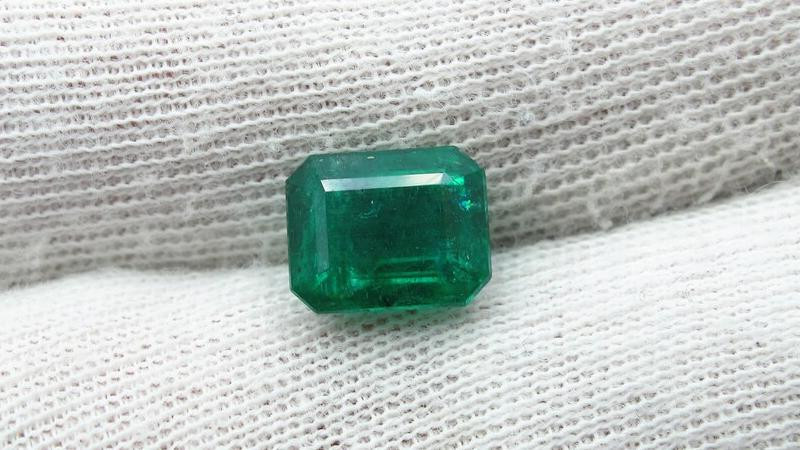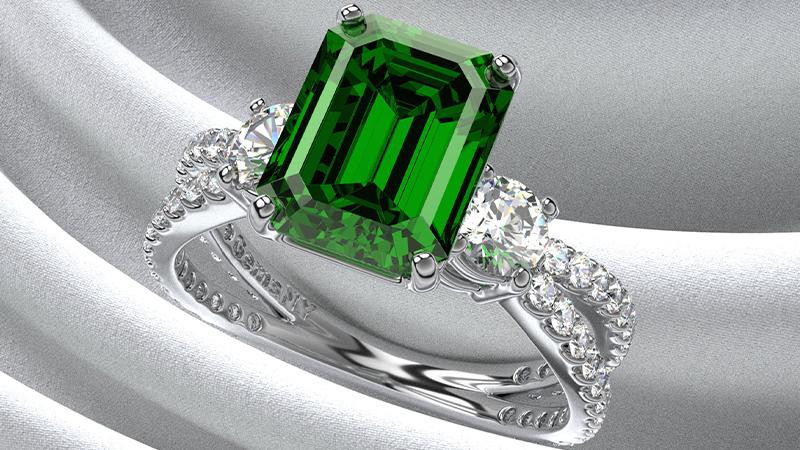Emeralds, with their vibrant green hue and timeless beauty, have captivated individuals for centuries. Whether you're looking for an engagement ring, a pendant, earrings, or any other form of jewelry, selecting the perfect emerald piece can be an exciting yet daunting task. This guide aims to provide you with valuable insights and tips to help you make an informed decision when choosing the perfect emerald jewelry, including information on sourcing and lab-grown emeralds.
1. Understanding Emeralds
Before diving into the selection process, it is crucial to familiarize yourself with emerald. Emeralds belong to the beryl family of gemstones and are known for their rich green color, which is because of the presence of chromium and vanadium. The value of an emerald is determined by its color, clarity, carat weight and cut.
2. Color
Color is the most vital aspect to consider when selecting an emeralds. The ideal emerald should exhibit a rich, vibrant green color with even saturation throughout the stone. Avoid emeralds that appear too dark or too light, as these may indicate lower quality. Additionally, look for stones with a slight blue undertone, as this enhances their overall beauty.
3. Clarity
Emeralds are typically more included than other gemstones, meaning they often have visible internal flaws known as inclusions. These inclusions are referred to as "jardin," a French word meaning garden, owing to their resemblance to foliage. While it is rare to find a flawless emerald, aim for stones with fewer inclusions that do not greatly affect the stone's transparency or durability.

4. Carat Weight
Carat weight refers to the size of the emerald and is an essential consideration when choosing jewelry. It is important to strike a balance between the carat weight and the other quality factors. A larger emerald might have more visible inclusions or a less desirable color, while a smaller emerald might possess exceptional clarity and color. Consider your personal preferences and budget when deciding on the carat weight.
5. Cut
The cut of an emerald plays a significant role in its overall brilliance and beauty. The most popular cut for emeralds is the rectangular or square shape with beveled corners, known as the emerald cut. This cut maximizes the stone's color and allows for a clear view of its interior. Other popular cuts include oval, round, pear and marquise. Choose a cut that appeals to your personal style and showcases the stone's natural beauty.
6. Metal & Setting
The setting of your emerald jewelry can greatly enhance its overall appearance. Consider the metal type, such as yellow gold, white gold, or platinum, which can complement the emerald's color. Additionally, decide on the type of setting, such as prong, bezel, or halo, based on your preference for showcasing the emerald or providing maximum protection.
7. Certification
When purchasing emerald jewelry, such as an emerald pendant necklace or emerald bracelet, it is crucial to ensure its authenticity and quality. Look for reputable jewelers who provide certificates of authenticity from recognized gemological laboratories. These certificates, such as those from the Gemological Institute of America (GIA) or the American Gemological Laboratories (AGL), provide detailed information about the emerald's characteristics, including color, clarity and treatments, if any.
8. Sourcing
Emeralds are primarily sourced from Colombia, Zambia, Brazil and Ethiopia. Emeralds from each source have unique characteristics, so emeralds from different regions may vary in color and clarity. colombian emeralds are highly regarded for their intense green color and exceptional clarity, while Zambian emeralds are known for their deep green color with a bluish undertone. Consider the origin of the emerald and its associated characteristics when making your choice.
9. Lab-Grown Emeralds
In recent years, lab-grown emeralds have gained popularity as an alternative to natural emeralds. These emeralds are created in a controlled laboratory environment using advanced technologies that mimic the natural formation process. Lab-grown emeralds possess the same chemical and physical properties as natural emeralds but are more affordable and often have fewer inclusions. They offer a sustainable and ethical option for those seeking emerald jewelry. When considering lab-grown emeralds, ensure they come with proper certification to distinguish them from natural emeralds.
10. Budget
Establishing a budget is important before embarking on your search for the perfect emerald stone ring or other jewelry. Emeralds can vary significantly in price based on their quality, sourcing and whether they are natural or lab-grown. Determine a comfortable price range and explore options within that range to avoid overspending or compromising on quality.
Conclusion
Choosing the perfect emerald jewelry requires careful consideration of color, clarity, carat weight, cut, setting, certification, sourcing, lab-grown options and budget. By understanding these key factors and assessing your personal preferences, you can make an informed decision that ensures you find a stunning emerald piece that reflects your style and stands the test of time.
Remember to purchase from reputable jewelers, such as GemsNY and seek expert advice when needed. With this guide, you are now equipped to embark on your journey to find the perfect emerald jewelry, whether it is a natural or lab-grown stone.
Related Post : Emerald Gemstone: A Spectrum of Hues to Choose From!

